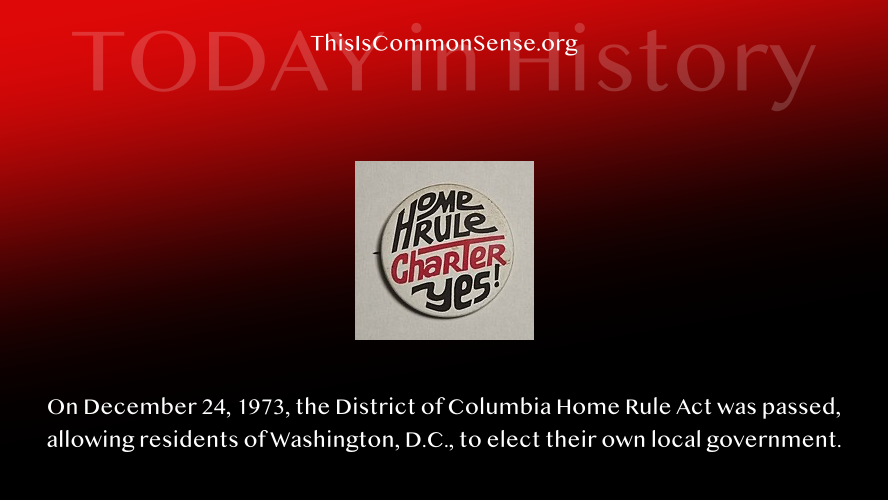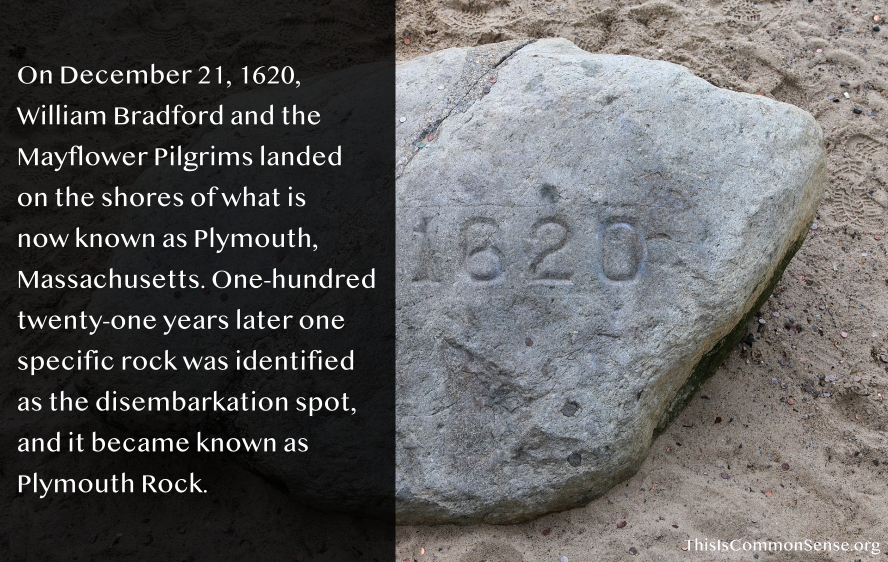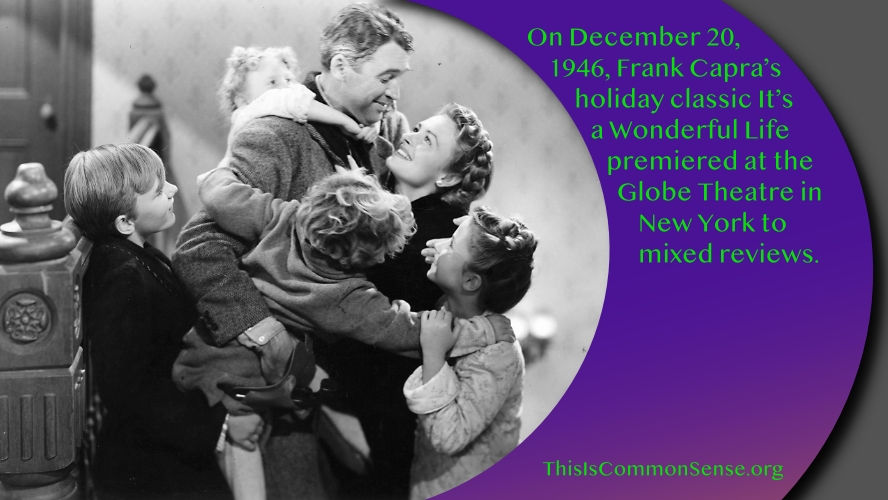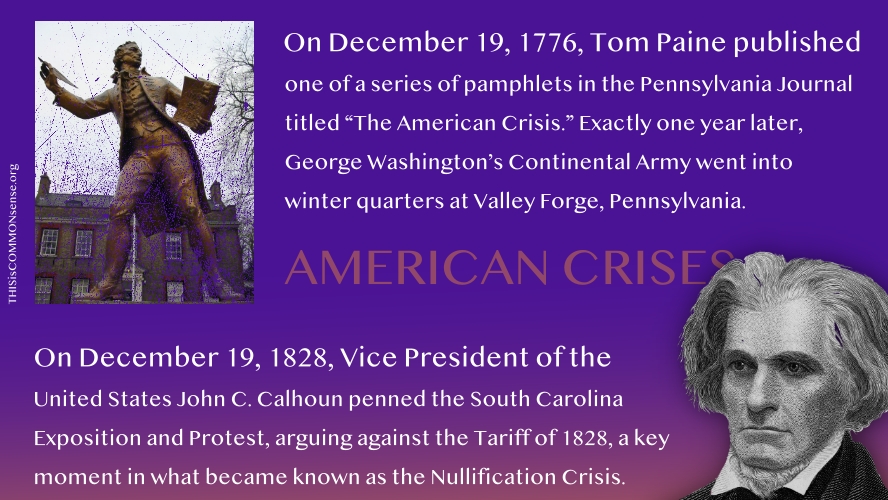On December 24, 1973, the District of Columbia Home Rule Act was passed, allowing residents of Washington, D.C., to elect their own local government.


On December 24, 1973, the District of Columbia Home Rule Act was passed, allowing residents of Washington, D.C., to elect their own local government.

On December 23, 2007, an agreement was reached for the Kingdom of Nepal to be abolished and the country to become a federal republic with the Prime Minister becoming head of state.

On December 22, 1989, Communist President of Romania Nicolae Ceaușescu was overthrown by Ion Iliescu after days of bloody confrontations. The deposed dictator and his wife fled Bucharest with a helicopter as protesters erupted in cheers.
The couple was quickly caught and, on Christmas day, tried by a military tribunal and executed by firing squad.

On December 21, 1620, William Bradford and the Mayflower Pilgrims landed on the shores of what is now known as Plymouth, Massachusetts. One-hundred twenty-one years later one specific rock was identified as the disembarkation spot, and it became known as Plymouth Rock.
American settlers in Nacogdoches, Mexican Texas, declared their independence on December 21, 1826, starting the Fredonian Rebellion.

On December 20, 1946, Frank Capra’s holiday classic It’s a Wonderful Life premiered at the Globe Theatre in New York to mixed reviews.

On December 19, 1776, Tom Paine published one of a series of pamphlets in the Pennsylvania Journal titled The American Crisis. Exactly one year later, George Washington’s Continental Army went into winter quarters at Valley Forge, Pennsylvania.
On December 19, 1828, Vice President of the United States John C. Calhoun penned the South Carolina Exposition and Protest, arguing against the Tariff of 1828, a key moment in what became known as the Nullification Crisis.